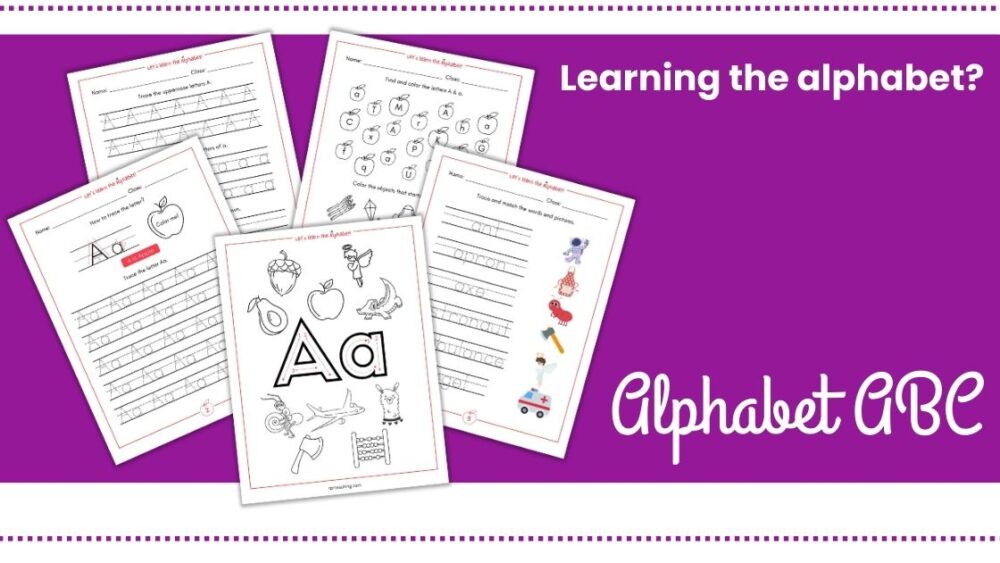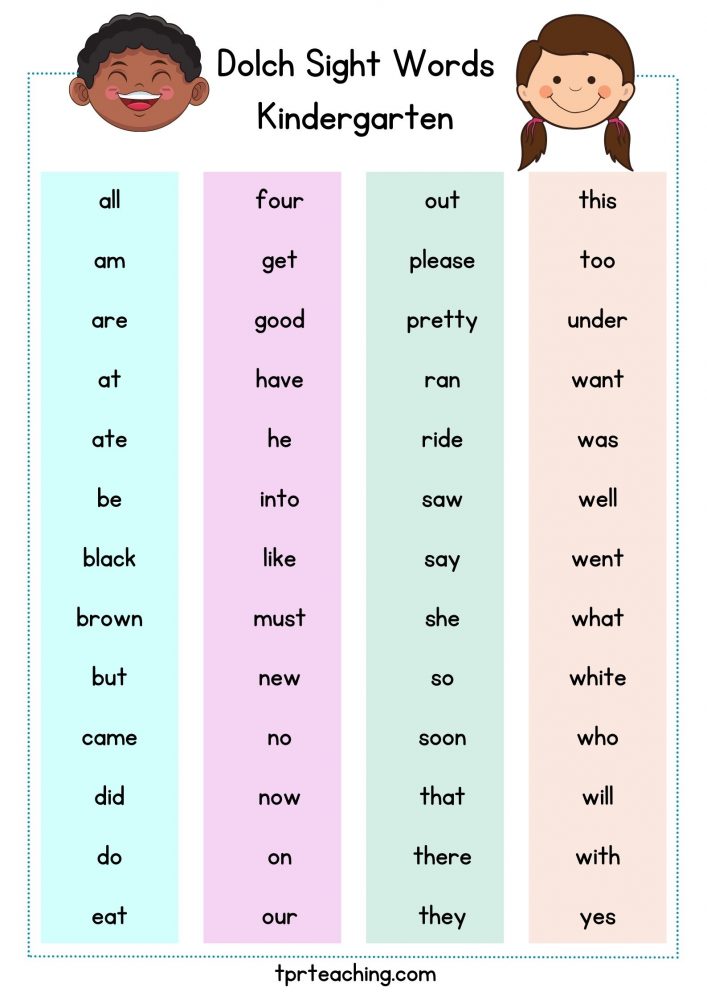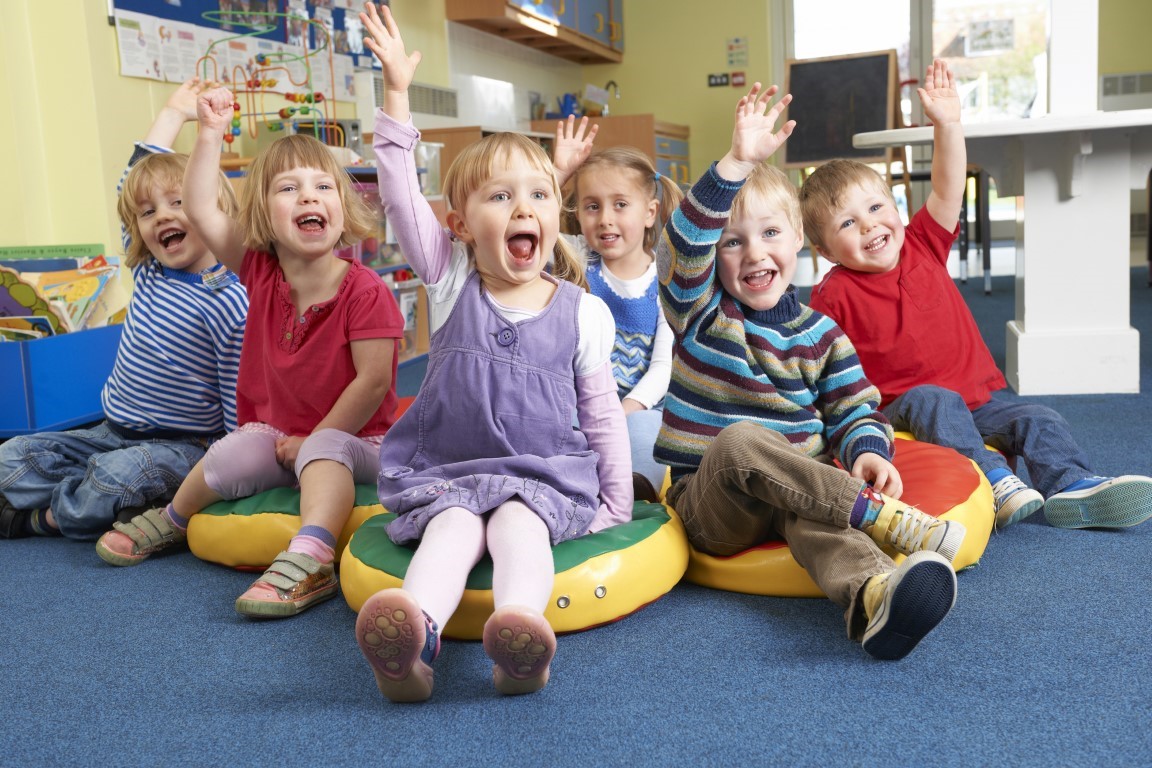As your child begins kindergarten, they will be expected to know a certain number of sight words.
This can be a daunting task for both you and your child. To help ease the stress, we have created a list of kindergarten sight words, as well as a free printable to use at home.
What are sight words?
Sight words are words that are recognized immediately by the reader without having to sound them out. They are also sometimes called “high-frequency” words because they often occur in the text.
Mastery of sight words allows the reader to focus on the meaning of the text rather than decoding individual words.
Sight words should be taught from as early as preschool. They have even been proven successful for students with disabilities.

Why are sight words important?
Sight words are an essential part of reading. They help your child to be able to read fluently and with comprehension.
When your child can recognize sight words quickly, they can focus on the meaning of the text rather than decoding each word.
Research has noted that students who struggle with reading during their early stages of education often encounter difficulties in their secondary education and adulthood.
Therefore, it is crucial to tackle any problems students may be having early and give them the time they need to develop their literacy skills.
Kindergarten Sight Words List
The following is a list of kindergarten sight words by educator Dr. Edward William Dolce. Dolce, the “father of sight words,” published the Dolch word list in his book “Problems in Reading” in 1948.
Here is a list of 52 of the most common kindergarten sight words:
- all
- am
- are
- at
- ate
- be
- black
- brown
- but
- came
- did
- do
- eat
- four
- get
- good
- have
- he
- into
- like
- must
- new
- no
- now
- on
- our
- out
- please
- pretty
- ran
- ride
- saw
- say
- she
- so
- soon
- that
- there
- they
- this
- too
- under
- want
- was
- well
- went
- what
- white
- who
- will
- with
- yes

Kindergarten Sight Words Printables
We have created a printable PDF of all 52 Dolch sight words for you to use at home with your child. The list is broken down into four groups of sight words in alphabetical order.
Put it on your fridge or somewhere you can see it often. Go over the words regularly with your child and tick them off as you go. Soon they will be able to recognize them all!
You can download the PDF here: Kindergarten Sight Words PDF Download
How to Teach Sight Words to Kindergarten Students
Here are some tips when teaching kindergarten sight words:
- Start with a smaller list of words first, one or two words to get started
- Don’t introduce visually-similar words at the same time as it can cause confusion
- Keep practicing and revising previously learned keywords
- Make use of visual stimuli, such as magnetic letters, letter stamps, and tiles
- Allow students to write or make words in different ways, for example, with chalk, sandboxes, or whiteboard markers
Sight Word Activities and Games for Kindergarten
There are many different ways to teach sight words to your child. Here are a few ideas:
Read Books Together
Read books together that contain a lot of sight words. As you come across a word, point it out and have your child read it with you.
Here are some kindergarten books you might be interested in.
Flashcard Drills
Use flashcards multiple times to practice identifying the sight words. You can make your own flashcards or purchase a set.
This is a great way to help your child learn their words in a fun and interactive way. The flashcards should be clearly printed and easily read.
Have your child read them aloud. They could also say the letter names sequentially.
Once they have mastered one set of cards, move on to the next set.
Sight Words Tracing
Write the words in different colors and have your child trace them. You can also have them write the words on their own.
Children may also enjoy tracing the words using sand, shaving cream or salt trays.

For English Language Teachers or Those Looking to Get Started…
Teacher tips, new teacher checklist, teacher planner, and notes. Subscribe for ESL News, jobs, and more!
Sight Word Scavenger Hunt
Hide the sight words around the house or classroom and have your child go on a scavenger hunt to find them. This is a great way to get them up and moving while learning.
Sight Word Memory
This is a classic game that can be played with any words. Write the words on cards and place them facedown. Take turns flipping over two cards at a time.
If they match, remove them from the board. If not, flip them back over and try again. The winner is the one with the most matches.
Silly Sentences
Make up silly sentences that contain the sight words, or allow your child to put some flashcards together to make their own silly sentences.
These silly sentences will help your child remember the words and their meaning.
Sight Word BINGO
Bingo is a great game for larger groups. Have each child choose 5-10 words from the list and write them in a grid on their piece of paper.
Call out the words one by one. If they have that word on their sheet, they can cross it off. The first one to get a BINGO wins!
Is sight word teaching effective?
The short answer is yes!
A lot of research has been conducted on the effectiveness of sight word instruction, and the results are positive.
According to the research study “The Effects of Sight Word Instruction on Students’ Reading Ability,” it was found that sight-reading instruction:
- Improves students’ overall reading ability
- Improves students’ reading confidence
- Reduce students’ frustration associated with learning to read
However, sight-reading instruction needed to be used in combination with other early-literacy skill instruction in order for it to be beneficial.
Students should practice reading sight words in isolation before reading them in the context of stories.
How to Teach Sight Words Effectively
Sight words should follow these criteria in order to be effective:
Can already recognize letters
The children need to be able to recognize letters and have some idea of the sound-letter relationship (also known as the alphabetic principle).
If children are still having trouble with letter sounds, Leapfrog Letter Factory teaches the sounds in a fun and memorable way.
Emphasis on the child’s pronunciation
To teach sight words effectively, it’s advisable to focus on the letters within the word, their order, and the child’s pronunciation of the word.
Repetition and Feedback
Sight words should be repeated often, and the child should be given feedback on their progress.
The kindergarten student should say the words until they can recognize and pronounce them reliably without errors.
Criticism of Sight Words Memorization
Some critics argue that memorizing sight words does not promote true reading fluency or comprehension.
They believe it stops students from practicing basic decoding techniques.
Phonological decoding is an important part of becoming a skilled reader. This involves breaking down the word into letters or clusters of letters within the word itself.
They also believe it can be “labor-intensive.” According to research, whole-word memorization requires an average of 35 trials per word.
Some educators believe that the list can still be useful if the students are taught the relationship between the sounds and the letters, groups of letters, or syllables in a word.
In Conclusion
There are lots of different ways to teach sight words to your child. With a bit of creativity, you can come up with games and activities that are both fun and educational.
Just remember to keep it simple and make use of visual aids and the things around you.
With a little practice, your child will be reading sight words in no time!
Useful Links
- How Many Letters Are In The Alphabet? Consonants & Vowels
- 103 Common Nouns List in English You Should Know (Alphabetized)
- Months of the Year with Pictures and Worksheet
- 3D Shape Names in English (Beginner Friendly)
- 41 Flower Names in English with Pictures (Flower List)
- 30 Examples of Verbs in Sentences
Online Teacher Toolkit
Be IN The Know
Get the latest jobs, news, and opportunities delivered directly to your inbox by joining my exclusive community. Grab my teacher planner, teacher checklist and tips now. Sign up here.
GEt Certified
Start your teaching journey and get certified now. Watch my YouTube video about how I got started, or read about my experience here: The TEFL Academy review.
START Your First Teaching JOb
New to the world of online teaching or just want to fill some hours in? Curious if this is a career you want to pursue? Check out Cambly to get started. Read the Cambly review.
Highest-Paying Online Teaching Jobs
In my post, I cover a list of some of the highest-paying online teaching jobs. Alternatively, use the curriculum online and find your own students. It’s easier than you think!
ACCEPT PAYMENTS ONLINE and Save money
Use Wise to accept payments from overseas. Wise has the lowest exchange rates that I am currently using right now. Get Wise.
Caitriona Maria is an education writer and founder of TPR Teaching, crafting inspiring pieces that promote the importance of developing new skills. For 7 years, she has been committed to providing students with the best learning opportunities possible, both domestically and abroad. Dedicated to unlocking students' potential, Caitriona has taught English in several countries and continues to explore new cultures through her travels.


